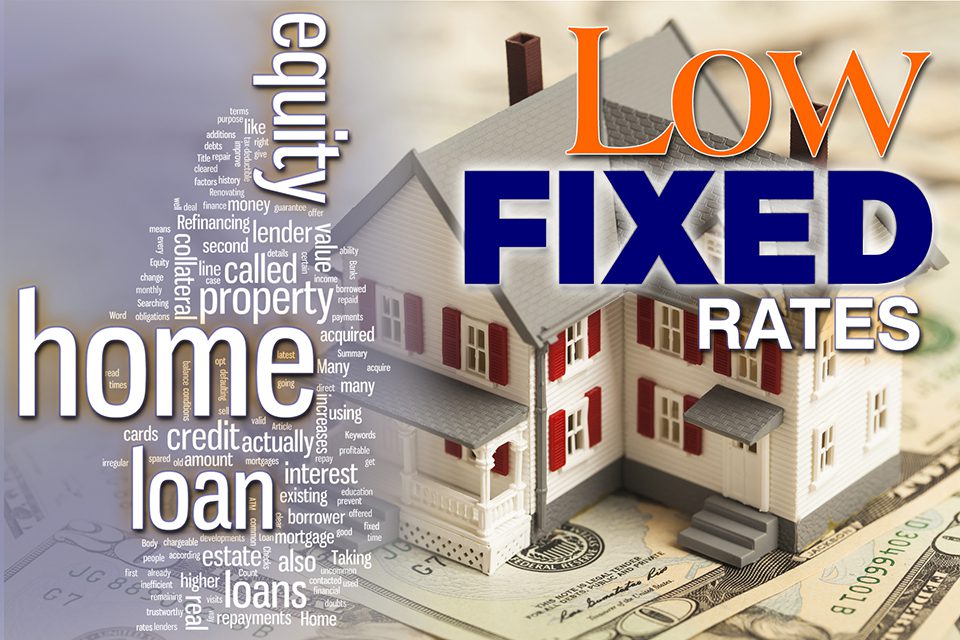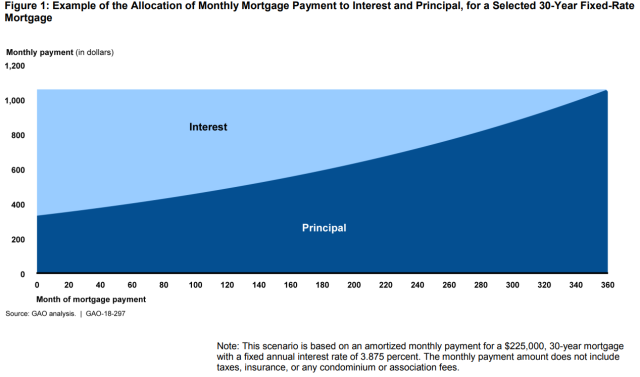Upsides and Downsides of Using Equity Release Mortgages in Retirement
Upsides and Downsides of Using Equity Release Mortgages in Retirement
Blog Article
Checking Out the Various Sorts Of Equity Release Mortgages Available Today
Equity Release home loans present different alternatives for homeowners aged 55 and over. equity release mortgages. These economic items deal with various requirements and choices, permitting people to access funds from their home. From lifetime home mortgages to shared admiration mortgages, each kind provides distinct advantages. Recognizing these choices is vital for making informed choices. What elements should one consider when picking the most ideal equity Release plan? The details that adhere to might clarify this important subject
Understanding Equity Release Mortgages
Equity Release home loans give house owners, typically those aged 55 and over, with a means to access the value locked up in their property without requiring to sell it. This financial choice enables people to transform a part of their home equity right into cash, which can be utilized for numerous objectives, such as home renovations, paying off financial obligations, or financing retirement.Equity Release can take various types, but it essentially includes borrowing against the worth of the home while maintaining possession. Home owners can pick to obtain a round figure or a series of smaller sized settlements, depending upon their financial demands and preferences.Additionally, the quantity offered for Release is affected by the property's worth, the home owner's age, and specific lender requirements. In general, comprehending equity Release home loans is important for home owners to make educated decisions concerning using their home's equity while taking into consideration the lasting implications.
Lifetime Mortgages
Life time home loans stand for one of one of the most prominent types of equity Release. This monetary product permits property owners, commonly aged 55 or older, to borrow versus the worth of their home while keeping possession. The loan, which is safeguarded against the home, builds up rate of interest with time however does not need monthly payments. Instead, the finance and built up passion are paid off when the homeowner passes away or moves right into long-term care.Lifetime home loans use versatility, as borrowers can choose to receive a round figure or opt for a drawdown facility, accessing funds as required. Importantly, numerous strategies included a no-negative-equity warranty, guaranteeing that customers will never ever owe more than the worth of their home. This attribute gives comfort, permitting individuals to appreciate their retirement without the anxiety of diminishing their estate. In general, life time home loans work as a viable option for those looking for financial backing in later life.
Home Reversion Program

Drawdown Life Time Mortgages
While many home owners look for means to access their wealth, drawdown life time mortgages present a versatile choice that enables people to Release funds slowly. This kind of equity Release mortgage allows house owners to borrow against the value of their home while keeping ownership. Unlike conventional lifetime home mortgages, drawdown strategies enable borrowers to access a part of their equity upfront and take out added funds as required, as much as a fixed limit.This function can be especially helpful for those who wish to handle their financial resources very carefully, as it minimizes rate of interest build-up by just billing rate of interest on the amounts drawn. In addition, drawdown life time home loans commonly come with a "no unfavorable equity warranty," ensuring that consumers will never owe more than their home's worth. This alternative fits retirees that want monetary safety and versatility, allowing them to fulfill unforeseen expenditures or maintain their way of living without needing to offer their home.
Enhanced Lifetime Mortgages
Improved Life time Mortgages provide distinctive advantages for eligible homeowners looking for to Release equity from their properties. Understanding the qualification standards is necessary, as it determines that can benefit from these specialized loans. It is additionally vital to assess the prospective disadvantages linked with boosted choices, making sure a well-rounded viewpoint on their use.
Qualification Requirements Explained
Comprehending the eligibility criteria for Improved Life time Mortgages is vital for possible candidates looking for to access the equity in their homes. Usually, candidates have to be aged 55 or older, as this age need is conventional in the equity Release market. Home owners should have a building valued at a minimal threshold, which can differ by loan provider. Notably, the building should be their primary house and in excellent problem. Lenders often evaluate the property owner's wellness status, as specific health and wellness conditions might boost qualification and advantages. In addition, candidates ought to not have existing substantial debts secured versus the home. Fulfilling these standards permits individuals to discover Enhanced Life time Home mortgages as a sensible choice for accessing funds bound in their homes.
Benefits of Improved Home Loans
After clearing up the qualification standards, it ends up being noticeable that Boosted Lifetime Home mortgages use a number of significant advantages for property owners seeking to leverage their property equity. Largely, they offer access to a bigger lending quantity contrasted to conventional life time home mortgages, profiting those with health problems or age-related factors that enhance their life expectancy risk. This enhanced loaning ability allows property owners to meet various monetary requirements, such as home improvements or retired life expenditures. Additionally, these mortgages usually include flexible repayment options, allowing debtors to manage their funds better. The no-negative-equity warranty additionally assures that homeowners will never ever owe greater than their building's value, supplying tranquility of mind. Generally, Enhanced Lifetime Mortgages offer an engaging option for eligible home owners looking for monetary remedies.
Prospective Downsides Taken Into Consideration
While Boosted Life time Home loans provide various benefits, potential disadvantages necessitate mindful factor to consider. One considerable issue is the influence on inheritance; the equity launched decreases the value of the estate delegated recipients. Furthermore, these mortgages can accrue significant rate of interest in time, leading to a significant financial debt that may exceed the original lending amount. There may also be limitations on residential property modifications or rental, restricting home owners' adaptability. In addition, improved items commonly call for specific wellness problems, meaning not all use this link property owners will qualify. Finally, handling the fees and charges connected with these home mortgages can be complicated, potentially bring about unanticipated costs. Consequently, individuals should extensively examine their situation and speak with economic consultants prior to proceeding.
Shared Admiration Home Mortgages
Shared Appreciation Home loans represent a special financial arrangement that allows property owners to access equity while sharing future residential or commercial property worth enhances with the lending institution. This technique provides prospective advantages such as lowered regular monthly repayments, however it additionally features downsides that have to be carefully taken into consideration. Understanding the qualification requirements is necessary for those thinking about this alternative.
Idea Review
Equity Release home mortgages, particularly in the type of common appreciation home mortgages, offer house owners a distinct economic remedy that permits them to access funds by leveraging the value of their home. In this arrangement, a loan provider offers a finance to the homeowner, which is commonly repaid with a share of the residential property's future admiration in value. This implies that when the property owner sells the residential property or passes away, the lender gets a percentage of the increased value, rather than just the preliminary financing amount. Shared recognition home loans can be appealing for those wanting to supplement their earnings or financing considerable expenses while maintaining ownership of their home. However, the financial effects of common gratitude have to be meticulously taken into consideration by possible debtors.
Benefits and Downsides
Although shared admiration mortgages can provide considerable economic benefits, they also include remarkable drawbacks that potential customers ought to take into consideration. These mortgages permit homeowners to access equity in their buildings while sharing a section of any type of future gratitude with the lending institution. This setup can be valuable throughout times of increasing residential property values, supplying significant funds without regular monthly repayments. The main disadvantage is the possible loss of equity; homeowners might end up with appreciably minimized inheritance for heirs. In addition, the complexity of the terms can bring about misunderstandings pertaining to repayment obligations and the percent of admiration owed. It is essential for borrowers to consider these elements meticulously prior to devoting to a shared gratitude mortgage.

Qualification Needs
What criteria must property owners fulfill to certify for a shared recognition mortgage? Mainly, prospects must go to least 55 years of ages, ensuring they are within the target market for equity Release items. Additionally, the residential property should be their main home and normally valued above a specified minimum threshold, frequently around ? 100,000. Lenders likewise examine the property owner's financial conditions, consisting of income and arrearages, to ascertain they can manage the home loan sensibly. Notably, the residential property must remain in good problem and complimentary from considerable lawful encumbrances. Home owners must additionally have a clear understanding of the terms, consisting of exactly how appreciation will be shown to the lending institution upon sale or transfer of the residential or commercial property, as this impacts general returns.
Choosing the Right Equity Release Choice

Regularly Asked Inquiries
What Age Do I Need to Be for Equity Release?
The age requirement for equity Release commonly starts at 55 for most plans. Some companies might provide options for those aged 60 and above, showing differing terms based on individual scenarios and loan provider policies.
Will Equity Release Influence My Inheritance?
Equity Release can influence inheritance, as the quantity borrowed plus rate of interest reduces the estate's worth. Heirs may obtain much less than prepared for, relying on the property's recognition and the overall financial obligation at the time of passing.
Can I Relocate Home With Equity Release?
The concern of moving house with equity Release arises frequently. Generally, people can move their equity Release strategy to a new building, yet specific conditions may apply, calling for consultation with the loan provider for guidance.
Are There Costs Associated With Equity Release Mortgages?
Charges related to equity Release home mortgages can include arrangement costs, appraisal charges, and legal prices. Furthermore, there might be early repayment fees, which can impact the overall expense and economic implications for the borrower.
How Does Equity Release Impact My Tax Situation?
Equity Release can influence one's tax circumstance by potentially increasing taxable earnings, as launched funds are thought about capital. Nevertheless, it generally does not incur immediate tax liabilities, making it important to consult a monetary advisor for customized advice.
Verdict
In summary, the selection of equity Release mortgages offered today uses homeowners aged 55 and over several paths to Extra resources access their residential or commercial property's worth - equity release mortgages. Whether choosing a lifetime mortgage, home reversion plan, or various other choices, each choice presents distinct benefits tailored to specific monetary demands. Careful factor to consider and examination with an economic advisor are crucial to guarantee the chosen equity Release solution aligns with personal goals and economic circumstances, inevitably assisting in notified decision-making for a safe and secure financial future. Equity Release home mortgages present different options for home owners aged 55 and over. Equity Release mortgages offer property owners, usually those aged 55 and over, with a means to access the value linked up in their building without needing to sell it. Improved Life time Mortgages supply unique benefits for eligible house owners looking for to Release equity from their residential properties. Equity Release mortgages, especially in the form of shared appreciation home loans, provide homeowners a special economic remedy that enables them to accessibility funds by leveraging the worth of their building. In recap, the variety of equity Release home loans available today supplies house owners aged 55 and over multiple paths to access their property's worth
Report this page